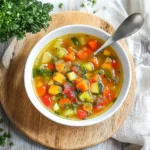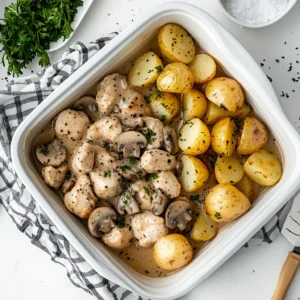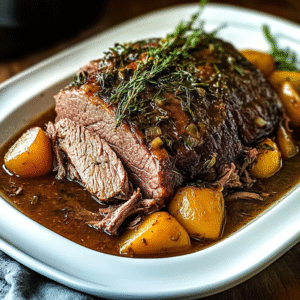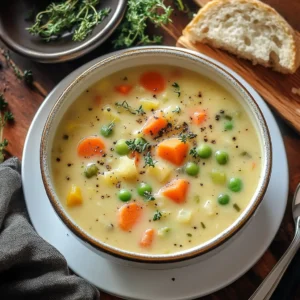When it comes to maintaining a balanced, healthy diet while keeping your carbs in check, a low carb vegetable soup recipe is a must-have. Whether you’re following a keto diet, cutting carbs, or simply trying to make healthier food choices, this soup is the perfect solution. Packed with nutritious vegetables, it’s a delightful option that won’t just fill you up but will also help nourish your body. But what makes this low carb vegetable soup recipe so special, and how can you tweak it to make it your own?
In this article, we’ll not only walk you through a simple, tasty recipe, but we’ll also discuss essential tips for customizing it based on your preferences and dietary needs. From the best vegetables to use to expert advice on meal prepping, we’ve got you covered. Plus, we’ll dive deeper into why this soup is an excellent choice for those looking to lower their carb intake. Ready to get started? Let’s jump in!
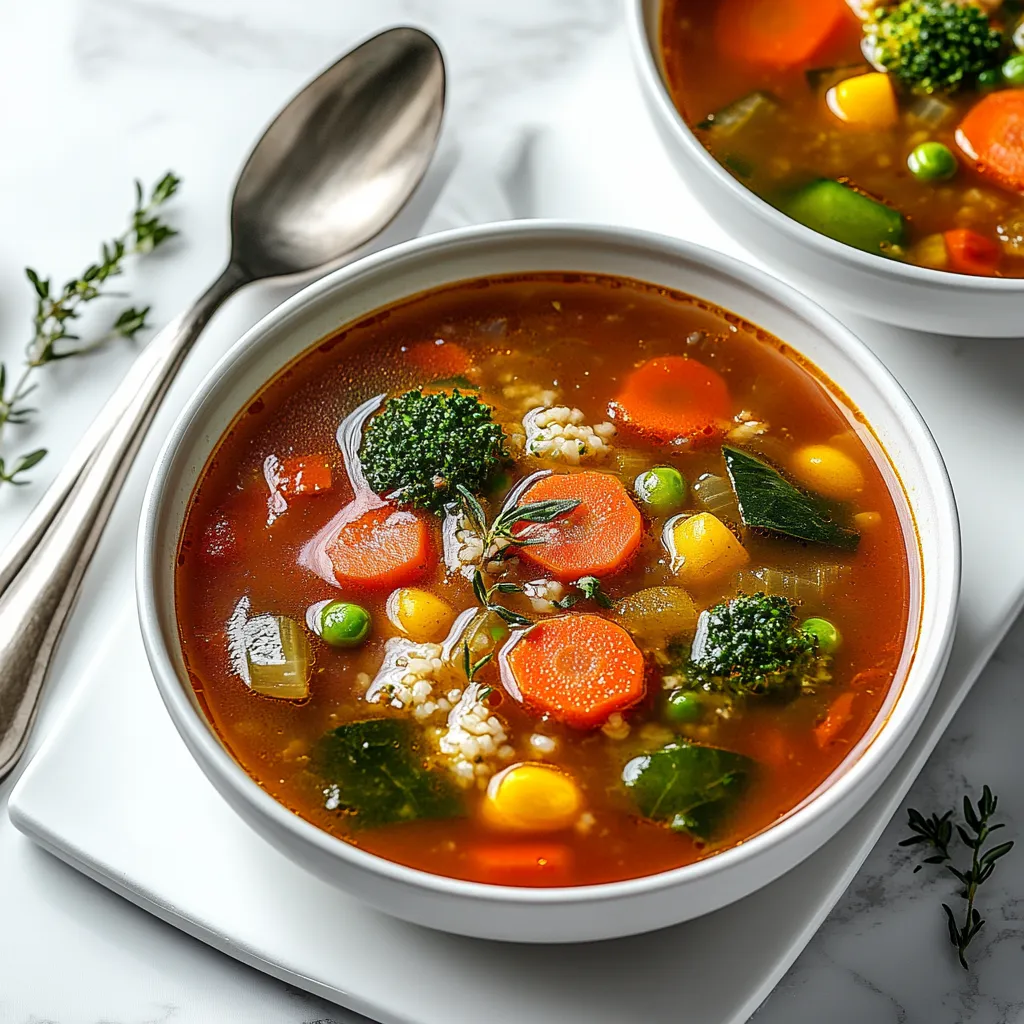
Benefits of Low Carb Vegetable Soup
Before we dive into the ingredients and instructions, let’s explore the benefits of choosing a low carb vegetable soup recipe as part of your diet. Here’s why you’ll love making this recipe:
Nutrient-Dense
Low carb vegetable soup recipes are often packed with a wide variety of vegetables, meaning they are rich in vitamins, minerals, and fiber. Vegetables like broccoli, cauliflower, and zucchini are nutrient powerhouses that support overall health and wellness.
Ideal for Meal Prepping
This soup is perfect for those who like to prepare meals in advance. It can be made in large batches, stored in the fridge for several days, or even frozen for long-term storage. Meal prepping this low carb vegetable soup recipe ensures that you always have a healthy, low-carb option on hand.
Great for Weight Management
Because it is low in calories but high in fiber, a bowl of this soup can help keep you full longer without packing in a lot of carbs. It’s the ideal choice if you’re looking to manage your weight or stick to a low-calorie, low-carb lifestyle.
Versatile and Customizable
This recipe can be adapted to suit your tastes and dietary restrictions. Whether you’re vegan, gluten-free, or prefer more protein, there’s flexibility in the ingredients, so you can make it your own.
Easy to Make
This low carb vegetable soup recipe doesn’t require complicated cooking techniques. With just a few simple ingredients and minimal prep time, you can have a delicious, wholesome meal ready in no time.
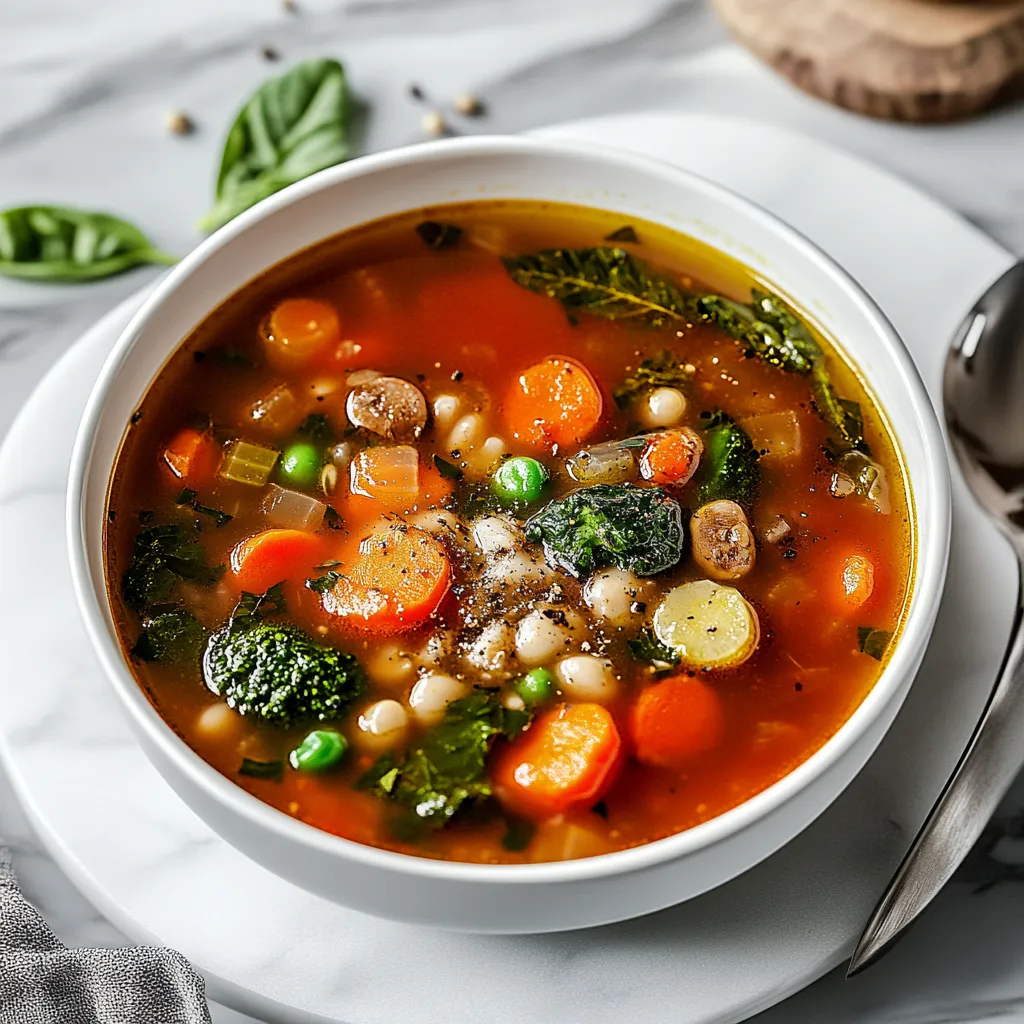
Ingredients for Low Carb Vegetable Soup
Now that we know the benefits, let’s go over the key ingredients that make this soup both tasty and low in carbs. You can easily customize this soup by swapping out any of these vegetables for your favorites or what you have on hand.
Vegetables
These vegetables form the base of the soup and contribute to its low-carb content. Use a combination of:
-
Broccoli: Packed with vitamins and antioxidants.
-
Cauliflower: Low in carbs and adds a nice texture to the soup.
-
Zucchini: Light, flavorful, and full of water, making it hydrating.
-
Green Beans: Provide a slight crunch and are low in carbs.
-
Cabbage: Adds bulk to the soup while keeping it light and low-carb.
Aromatics and Herbs
To bring depth of flavor to your soup, use fresh ingredients like:
-
Onions and Garlic: These give the soup a rich, savory flavor that will shine through even with the low-carb ingredients.
-
Fresh Herbs (Rosemary, Thyme): Adding a touch of fresh rosemary and thyme can transform your low carb vegetable soup recipe into a fragrant masterpiece.
-
Leeks: If you’re aiming for a slightly more nuanced flavor, leeks are a great addition.
Broth
The broth is the soul of the soup. Use a low-sodium vegetable broth for a cleaner taste, or if you’re in the mood for something heartier, you can swap it out for chicken broth. Always opt for low-sodium to keep your soup as healthy as possible.
Healthy Fat
To sauté the vegetables and provide some healthy fat, olive oil is a great choice. It’s rich in heart-healthy fats and gives the soup a subtle richness. If you’re avoiding oil, you can skip this or use a small amount of avocado oil as a substitute.
Leafy Greens
Kale or spinach are ideal additions for extra nutrients. They bring in fiber and essential vitamins, and their subtle flavor complements the other vegetables beautifully.
Tips for Customizing Your Low Carb Vegetable Soup
One of the best parts about making your own low carb vegetable soup recipe is the ability to customize it to suit your personal tastes and dietary preferences. Here are a few ideas for making the soup even more unique:
Add Protein
If you’re looking for a heartier meal, consider adding a plant-based protein such as chickpeas or lentils. Keep in mind, though, that adding these ingredients will increase the carb count, so use them sparingly if you’re following a strict low-carb diet.
Experiment with Spices
If you like a bit of heat, red chili flakes can be a great addition. For a more earthy, warming flavor, try adding cumin or turmeric. These spices add extra layers of flavor and are perfect for those who enjoy bold, spiced dishes.
Make it Creamy
For a creamier version, blend a portion of the soup once it’s cooked. This will make the broth thicker and richer, giving it a silky texture without adding any cream or high-carb ingredients.
Add More Low-Carb Vegetables
The beauty of vegetable soups is that you can always experiment. If you prefer, you could add asparagus, bell peppers, mushrooms, or artichokes to the mix. These vegetables are not only low in carbs but also packed with flavor and nutrients.
Skip the Oil
If you’re following an oil-free diet, you can sauté the vegetables in vegetable broth or water instead of olive oil. This will reduce the overall fat content while keeping the soup light and flavorful.
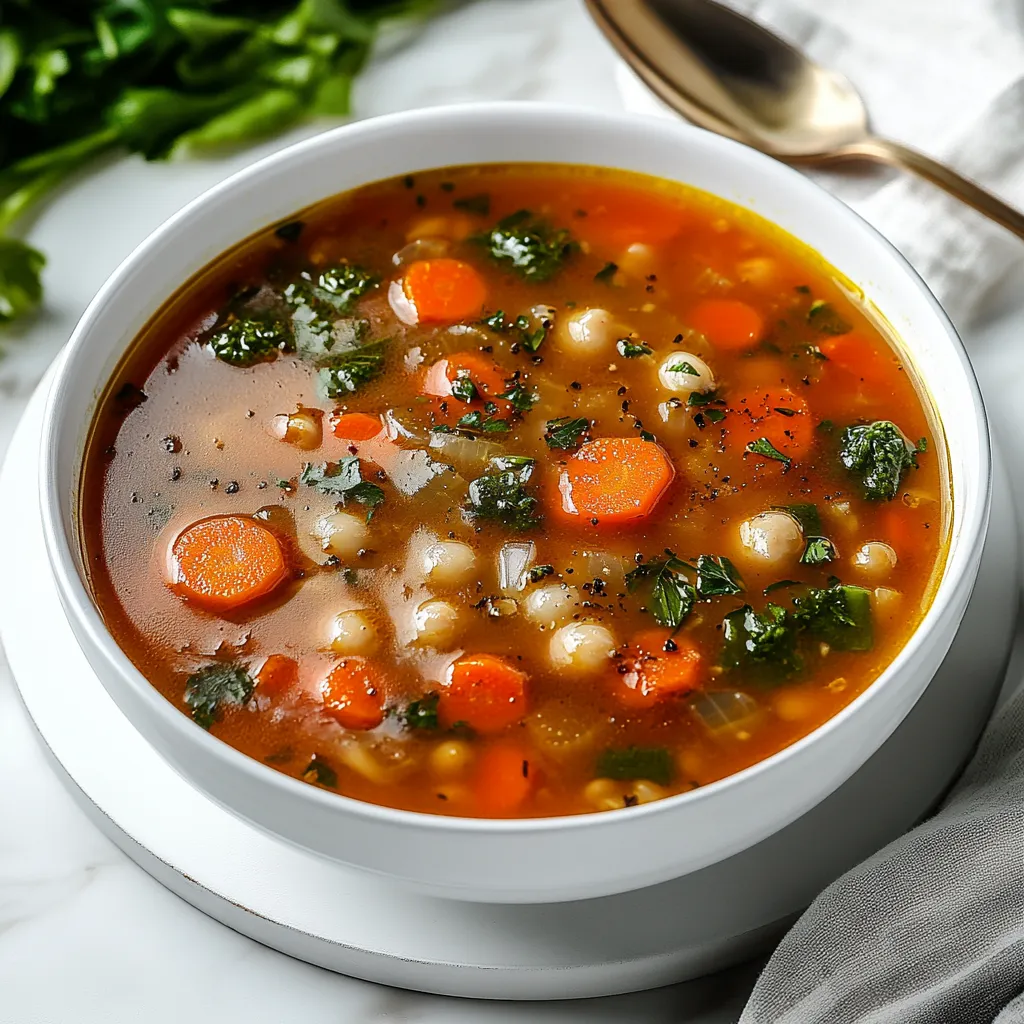
How to Make Low Carb Vegetable Soup
Now that we’ve covered the benefits and ingredients, let’s walk through the simple steps to prepare this low carb vegetable soup recipe. It’s an easy process that requires minimal effort and time, making it the perfect solution for a healthy, quick meal.
Step-by-Step Instructions
-
Prepare Your Vegetables
Start by washing and chopping your vegetables. Dice the onion, carrot, and celery into small pieces for quick cooking. Slice the leek, mince the garlic, and cut your zucchini and cabbage into bite-sized chunks. Having everything prepared beforehand ensures that the cooking process will go smoothly. -
Sauté the Aromatics
Heat a large pot or Dutch oven over medium heat. Add the olive oil (or substitute) and let it warm up. Begin by sautéing the onion, carrot, and celery in the pot. Stir occasionally and cook for about 5-7 minutes until the vegetables are soft and fragrant. -
Add Leeks and Garlic
Once the base vegetables have softened, add the sliced leek and minced garlic to the pot. Stir them in and let them cook for an additional 2-3 minutes, allowing the flavors to meld together. -
Add the Herbs and Spices
Now, it’s time to bring in the fresh herbs. Stir in the fresh rosemary and thyme, and add red chili flakes if you like a little heat. These spices will infuse the soup with a wonderful aroma and flavor. -
Add the Vegetables and Broth
Next, toss in your chopped vegetables: green beans, zucchini, broccoli, cauliflower, and cabbage. Stir them to combine well with the aromatics and spices. Pour in your low-sodium vegetable broth, and bring the mixture to a boil over high heat. -
Simmer and Cook
Once the soup reaches a boil, reduce the heat to medium-low and let it simmer for 15 minutes. During this time, the vegetables will become tender, and the flavors will meld together. Keep an eye on the soup and stir occasionally to prevent sticking. -
Blend for Creaminess (Optional)
For a smoother texture, take 2-3 ladles of the soup and transfer it to a blender. Blitz until smooth, then return the blended portion to the pot. This step helps create a creamier, thicker broth without adding any high-carb ingredients like cream or cheese. If you prefer a chunkier soup, feel free to skip this step. -
Add Leafy Greens
Stir in your leafy greens (kale or spinach) and cook for another 2-3 minutes until they’re wilted. This will add extra nutrients and a pop of color to the soup. -
Season to Taste
Before serving, taste the soup and adjust the seasoning with salt and freshly ground black pepper. Depending on your preferences, you may want to add a little more herbs or spices at this stage. -
Serve and Enjoy
Your low carb vegetable soup is now ready to enjoy! Serve it hot, and feel free to pair it with a side of whole grain crackers or a light salad for a complete meal.
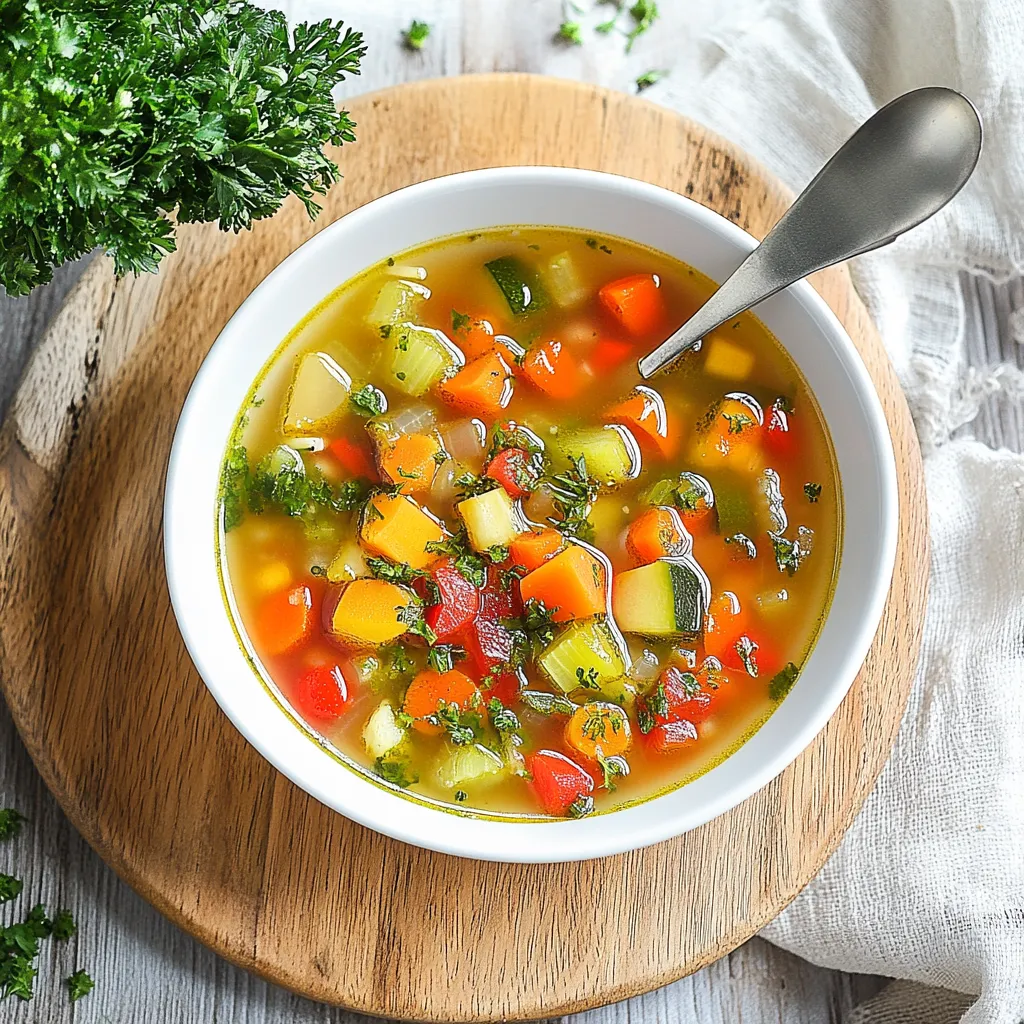
Tips for the Best Low Carb Vegetable Soup
-
Make it Spicy: If you enjoy heat, increase the amount of red chili flakes or even add a dash of cayenne pepper. For an extra kick, try some freshly chopped jalapeños.
-
Don’t Overcook the Veggies: While you want your vegetables tender, avoid overcooking them, as they can lose some of their flavor and texture. Be sure to monitor the soup while simmering.
-
Use Homemade Vegetable Stock: For a richer flavor, consider making your own vegetable stock at home. This will allow you to control the ingredients and ensure that no hidden sugars or unhealthy additives sneak into your soup.
-
Storing Leftovers: If you have leftover soup, store it in an airtight container in the fridge. It will keep well for 3-5 days. For longer storage, freeze the soup for up to 3 months.
Nutritional Information
Here’s a quick breakdown of the approximate nutritional value for each serving of low carb vegetable soup based on the ingredients provided in this recipe:
| Nutrient | Amount per Serving (1 Cup) |
|---|---|
| Calories | 216 |
| Total Fat | 8g |
| Saturated Fat | 1g |
| Unsaturated Fat | 6g |
| Cholesterol | 0mg |
| Sodium | 415mg |
| Carbohydrates | 34g |
| Fiber | 11g |
| Sugar | 13g |
| Protein | 8g |
Note: Nutritional values are based on using vegetable broth and olive oil. Values may vary depending on specific ingredients and substitutions.
Customizing the Nutrition
-
Reduce Calories: To reduce calories further, use less oil, or sauté the vegetables in water or vegetable stock.
-
Increase Protein: Add some plant-based protein like chickpeas, lentils, or even tofu to boost the protein content of the soup.
Why This Low Carb Vegetable Soup Recipe Works
The beauty of this low carb vegetable soup recipe lies in its simplicity and versatility. It’s packed with fiber-rich vegetables that keep you full longer and help maintain steady blood sugar levels. Because it’s low in carbs, it’s an ideal choice for anyone following a ketogenic or low-carb diet, helping you stay on track while still enjoying delicious food.
This soup isn’t just for dinner either. You can have it as a light lunch, serve it as a side dish with your main meal, or even take it along for a quick work lunch. It’s the kind of meal that fits into busy lifestyles while still delivering the nutrients your body needs.
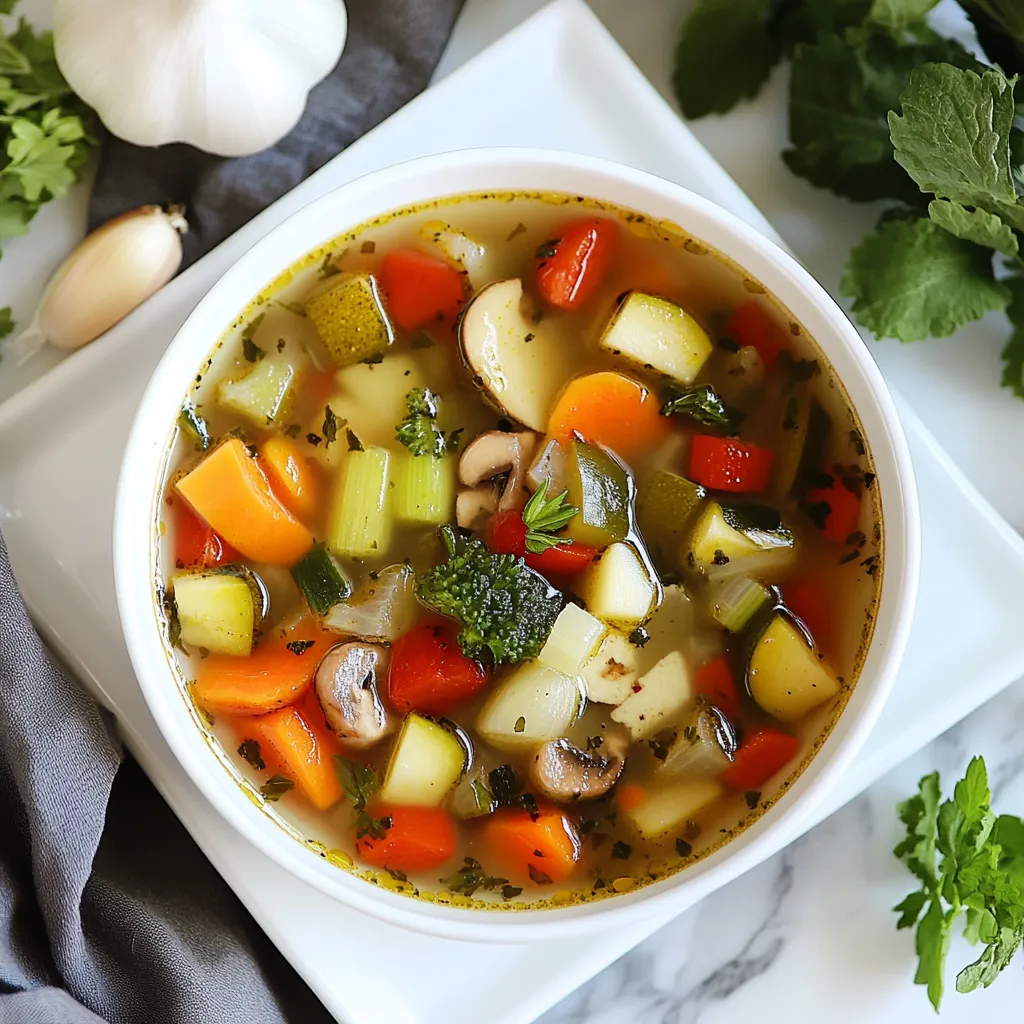
How to Store and Reheat Low Carb Vegetable Soup
One of the best things about this low carb vegetable soup recipe is that it stores well and can be enjoyed multiple times throughout the week. Whether you’re meal prepping or just want to make extra for later, here are some tips on storing and reheating your soup:
Storing the Soup
-
In the Refrigerator:
Allow the soup to cool down to room temperature before transferring it into airtight containers. This will help prevent condensation from watering down your soup. Stored properly, it will keep for 3-5 days in the fridge. -
In the Freezer:
If you want to store it for a longer period, this soup freezes exceptionally well. Let it cool completely, then transfer it to freezer-safe containers or freezer bags. Make sure to label the containers with the date to track its freshness. It can be stored in the freezer for up to 3 months.
Reheating Tips
-
In the Microwave:
If you’re reheating individual servings, simply transfer the soup to a microwave-safe bowl and heat it for 2-3 minutes, stirring halfway through. Depending on the strength of your microwave, you may need a bit more time. -
On the Stovetop:
To reheat a larger batch, place the soup in a pot and heat over medium-low heat for about 10 minutes, stirring occasionally. If the soup has thickened too much while stored, add a bit of vegetable stock or water to thin it out to your desired consistency.
Freezing for Later
If you’ve made a large batch and want to freeze it for future meals, consider portioning it out into smaller servings. This makes it easier to defrost only the amount you need without wasting any. When you’re ready to enjoy, simply let it thaw overnight in the fridge or use the defrost setting on your microwave for a quicker thaw.
Why This Soup is Perfect for Your Low-Carb Diet
This low carb vegetable soup recipe is not only satisfying and nutritious but also perfectly aligns with the principles of a low-carb or ketogenic diet. By focusing on fiber-rich vegetables and healthy fats, you create a meal that supports your overall health and keeps you feeling full without spiking your blood sugar.
Vegetable-based soups like this one are an excellent option for low-carb eaters because they’re rich in nutrients yet low in calories. This recipe is also naturally gluten-free and vegan, making it suitable for a variety of dietary restrictions. Plus, the fact that it’s so easy to customize means that you can adjust it according to your dietary goals or preferences, whether that’s adding more protein, swapping out vegetables, or adjusting the seasoning.
Variations to Try
If you enjoy this low carb vegetable soup recipe, you may want to try some variations based on your flavor preferences or nutritional needs. Here are a few ideas to get you started:
1. Add a Protein Boost
If you’re looking to add more protein to your soup, consider incorporating cooked chicken breast, turkey, or tofu. These options provide lean protein without significantly increasing the carb count.
2. Spicy Variations
If you love spicy food, boost the heat with some extra chili peppers, cayenne pepper, or jalapeños. The heat will add a nice contrast to the soothing flavors of the soup.
3. Herb and Spice Variations
Feel free to experiment with different herbs and spices to enhance the flavor. For example, you can try adding fresh basil, dill, or oregano to the soup for a different flavor profile.
4. Creamy Version
For those who like a creamy texture, consider adding unsweetened coconut milk or a small amount of heavy cream to the soup. This will give it a rich and velvety texture while still keeping it low carb.
5. Swap Vegetables
Although this recipe is based on a variety of low-carb vegetables, you can easily swap in others depending on what you have on hand. Try adding spinach, brussels sprouts, or kale for extra vitamins and nutrients. Just make sure to avoid starchy vegetables like potatoes or corn, which can increase the carb count.
Conclusion
This low carb vegetable soup recipe is a versatile, nutritious, and satisfying meal that’s perfect for anyone looking to reduce their carb intake without compromising on flavor. The combination of healthy vegetables, herbs, and spices creates a soup that is both delicious and filling. Whether you’re looking for a quick weeknight dinner or a meal prep option that will last all week, this soup checks all the boxes.
With its low calorie count, high fiber content, and customizable ingredients, it’s a great addition to any diet, whether you’re following a ketogenic, low-carb, or plant-based lifestyle. Don’t hesitate to experiment with your own variations to make this soup your own. Enjoy the simplicity and nourishment that this hearty bowl of goodness provides!
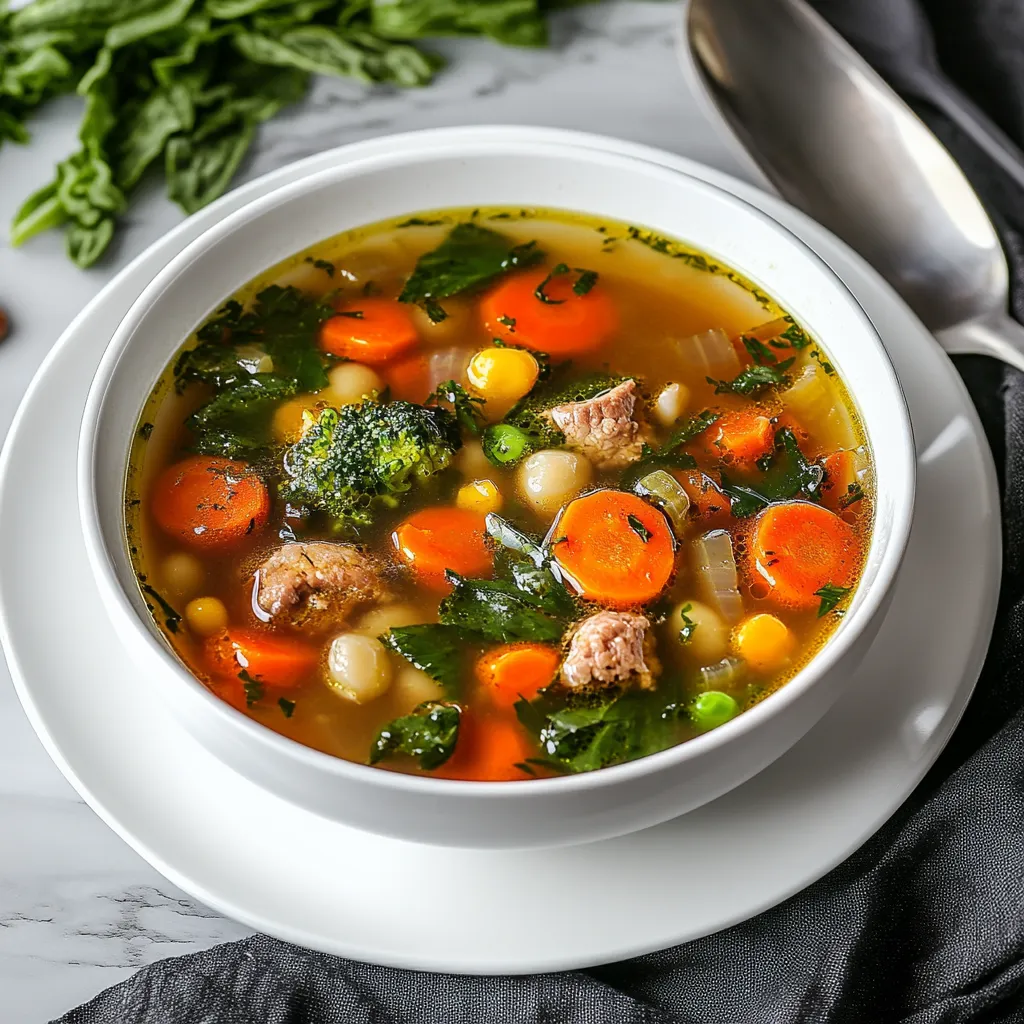
Low Carb Vegetable Soup Recipe
Ingredients:
-
2 tablespoons olive oil (or substitute with avocado oil)
-
1 large onion, diced
-
1 large carrot, diced
-
4-5 celery stalks, diced
-
1 small leek, sliced (white and light green parts)
-
2 large garlic cloves, minced
-
1 tablespoon fresh rosemary, finely chopped
-
1 tablespoon fresh thyme, finely chopped
-
¼ teaspoon red chili flakes (optional)
-
3.5 oz (100g) green beans, trimmed
-
1 medium zucchini, diced
-
2 cups (200g) broccoli florets
-
2 cups (200g) cauliflower florets
-
6 cups low-sodium vegetable stock
-
2 cups (100g) white cabbage, shredded
-
2 cups (100g) kale, roughly chopped
-
Salt and freshly ground black pepper to taste
Instructions:
-
Heat olive oil in a large pot or Dutch oven over medium heat.
-
Add diced onion, carrot, and celery. Cook for about 5-7 minutes, stirring occasionally, until the vegetables are softened.
-
Add the sliced leek and minced garlic to the pot, cooking for an additional 2-3 minutes until fragrant.
-
Stir in fresh rosemary, thyme, and red chili flakes (if using).
-
Add the green beans, zucchini, broccoli, cauliflower, vegetable stock, and shredded cabbage. Stir well to combine.
-
Bring the soup to a boil, then reduce the heat to medium-low. Simmer for about 15 minutes until vegetables are tender.
-
For a creamier texture, blend 2-3 ladles of soup in a blender and return it to the pot.
-
Add the chopped kale and simmer for another 2-3 minutes until the kale is wilted.
-
Season with salt and black pepper to taste, and serve.
Notes:
-
If you prefer a smoother soup, blend the entire batch instead of just a portion.
-
For extra protein, consider adding cooked chickpeas, lentils, or tofu. Keep in mind that this will increase the carb count.
-
To reduce calories, sauté the vegetables in vegetable broth instead of olive oil.
-
This soup freezes well. Store in an airtight container for up to 3 months.
Nutritional Facts (per serving):
-
Calories: 216
-
Total Fat: 8g
-
Saturated Fat: 1g
-
Unsaturated Fat: 6g
-
Cholesterol: 0mg
-
Sodium: 415mg
-
Carbohydrates: 34g
-
Fiber: 11g
-
Sugar: 13g
-
Protein: 8g
Prep Time: 10 minutes
Cook Time: 30 minutes
Total Time: 40 minutes
Method: Stovetop
Cuisine: Vegan, Low-Carb
Servings: 4
Calories per Serving: 216
Yield: 4 servings
Low Carb Vegetable Soup Recipe
Ingredients
- 1 large onion, diced
- 1 large carrot, diced
- 4-5 celery stalks, diced
- 1 small leek, sliced (white and light green parts)
- 2 large garlic cloves, minced
- 1 tablespoon fresh rosemary, finely chopped
- 1 tablespoon fresh thyme, finely chopped
- ¼ teaspoon red chili flakes (optional)
- 3.5 oz (100g) green beans, trimmed
- 1 medium zucchini, diced
- 2 cups (200g) broccoli florets
- 2 cups (200g) cauliflower florets
- 6 cups low-sodium vegetable stock
- 2 cups (100g) white cabbage, shredded
- 2 cups (100g) kale, roughly chopped
- Salt and freshly ground black pepper to taste
Instructions
- Heat olive oil in a large pot or Dutch oven over medium heat.
- Add diced onion, carrot, and celery. Cook for about 5-7 minutes, stirring occasionally, until the vegetables are softened.
- Add the sliced leek and minced garlic to the pot, cooking for an additional 2-3 minutes until fragrant.
- Stir in fresh rosemary, thyme, and red chili flakes (if using).
- Add the green beans, zucchini, broccoli, cauliflower, vegetable stock, and shredded cabbage. Stir well to combine.
- Bring the soup to a boil, then reduce the heat to medium-low. Simmer for about 15 minutes until vegetables are tender.
- For a creamier texture, blend 2-3 ladles of soup in a blender and return it to the pot.
- Add the chopped kale and simmer for another 2-3 minutes until the kale is wilted.
- Season with salt and black pepper to taste, and serve.
Notes
- If you prefer a smoother soup, blend the entire batch instead of just a portion.
- For extra protein, consider adding cooked chickpeas, lentils, or tofu. Keep in mind that this will increase the carb count.
- To reduce calories, sauté the vegetables in vegetable broth instead of olive oil.
- This soup freezes well. Store in an airtight container for up to 3 months.
